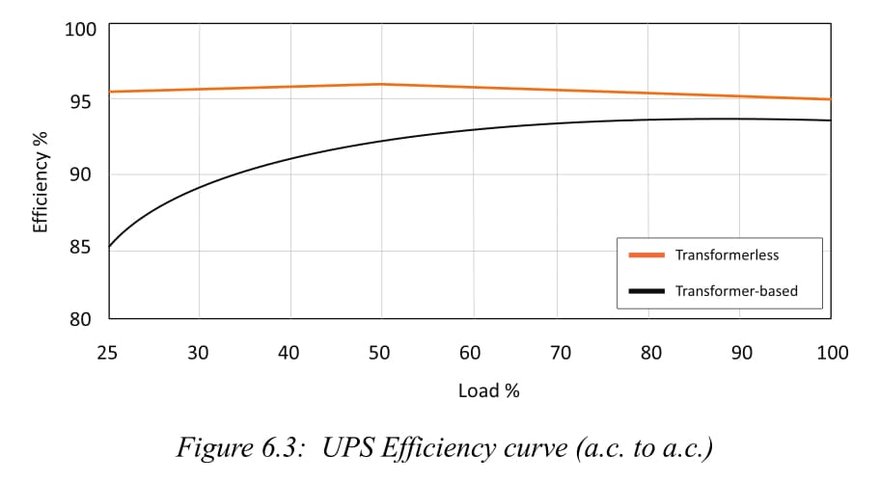UPS systems have become complex over time, which can make it hard to stay on top of terminology or concepts used. In this article series, Alan Luscombe, director at Uninterruptible Supplies Ltd, gives a short explanation of one term each week.
This week, we explore why static, double-conversion online UPSs today invariably use transformerless technology. In total, the manufacture of transformerless UPSs was almost four times greater in 2016 than transformer-based UPSs, which is estimated to increase to five times by 2021.
Its key advantage is efficiency, which increases by around five percent, with improvement across the entire load spectrum. This substantially reduces both electricity and cooling expenditure. Transformerless designs also yield a higher input power factor, which remains near unity with minimal load dependence. Input current magnitudes, and therefore cabling and switchgear sizing, are reduced. This sometimes cuts electricity costs.
In addition, the total input current harmonic distortion (THDi) in three-phase UPSs reduces from around 30 percent to below three percent through transformerless technology. Limiting harmonic emissions contributes considerably to meeting the Energy Networks Association G5/4-1 recommendations concerning satisfactory operation of the electricity supply system with connected equipment, through EMC compatibility.
Transformerless topology also has physical benefits, bringing profound changes to the UPS industry. Eliminating the transformer and the 12-pulse rectifier previously required considerably reduces both size and weight. The total system footprint is more than halved, while weight is cut by about three-quarters. Such reductions mean that UPSs become rack-mounting modules rather than monolithic floor-standing units.
Accordingly, modular UPS systems have become viable. Availability improves immediately, with redundancy easily and economically added by populating UPS frames with N+1 modules. Availability is yet further improved as faulty modules can be replaced rapidly rather than spending hours offline while effecting repairs in situ. Ultimately, if the modules are hot swappable, the load experiences no power interruption whatsoever.
Modular UPS implementations also benefit significantly from scalability; modules can easily be added to racks without power interruption to increase capacity. In many systems, racks can be paralleled together for further expansion, whilst providing the required redundancy.


